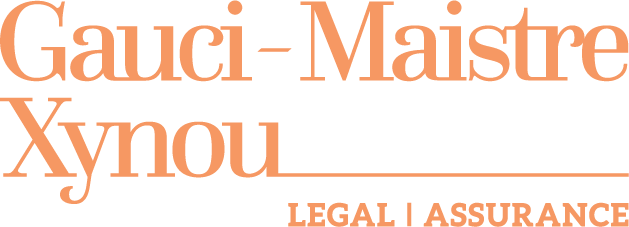The principle of equality between men and women is a fundamental value constantly on the European Union’s agenda. Ample EU institutes, programmes, and legislation provide for gender equality, and case law of the Court of Justice of the European Union (‘CJEU’) reaffirms the progress made in this respect. On a member state level, the enactment of gender neutral laws (particularly in the fields of inheritance law, marriage law, and employment law), may be considered as having reached its culmination in a number of EU member states, in the legal recognition of non-binary people. In turn, the European Parliament is now actively seeking to bring language evolution at par with gender inclusive legislation.
In fact, such far-reaching legislative measures are both reflective of and a driving force for cultural developments. Linguistic developments, particularly politically correct terminology, illustrate cultural shifts. Yet EU gender inclusive legislation is galvanising the transition from gender discrimination towards gender equality by actively promoting gender neutrality and gender inclusion.
The impending need to cater linguistically for gender neutrality and gender inclusion is being progressively addressed by the European Parliament, particularly through its guidelines on ‘Gender-Neutral Language in the European Parliament (the “Guidelines”) issued on July 2018 and its most recent resolution ‘Gender Mainstreaming in the European Parliament on 15th January 2019 on gender mainstreaming in the European Parliament (the “Resolution”).
In terms of the ‘Gender Identity, Gender Expression and Sex Characteristics Act’[1], Malta has been at the forefront in providing for such legal recognition[2], entitling Maltese citizens the right to request a change of one’s recorded gender in order to match the person’s self-determined gender identity. Identity Malta issued its first ever gender neutral ID card and passport in January 2018, identifying an individual with the neutral gender marker ‘X’ instead of the traditional ‘M’ or ‘F’[3]. Contrastingly, in the same year the UK High Court ruled that the refusal to issue gender neutral passports is not illegal[4].
Gender neutrality seeks to avoid gender bias while gender inclusion attempts to consider each and every gender[5]. Certain social media platforms recognise well over fifty gender options[6]. While such matters may be legislatively catered for through the use of an ‘X’ in official documents, closing the gap from a linguistic point of view may require a longer period of time, necessitating not only a change in legislation, but even a change in mind-set.
A reading of the Guidelines indicates that the said may be more inclined towards addressing the eradication of gender discrimination between men and women. There is no mention of non-binary people throughout the Guidelines; hence to a certain extent the Guidelines cater for a multitude of genders only indirectly through the promotion of gender neutrality. The General Secretariat of the Council of the European Union tentatively seeks to provide for such unchartered territory; mentioning non-binary people in its inclusive communication guidelines[7]. Nonetheless, the main focus remains on bridging the gap between males and females.
Bearing in mind its multilingual working environment, the European Parliament highlights and focuses upon (i) the generic use of the masculine gender; (ii) names of professions having male connotations; and (iii) the use of titles indicating a woman’s marital status, as issues which are by and large common to most European languages. While the Guidelines are addressed towards parliamentary publications and communications and do not cater for legislative drafting, tackling the generic use of the masculine gender may nonetheless prove to be a tough nut to crack, considering the fact that such practice has since time in memorial, been epitomised in legislation itself.
In light of the context of gender neutrality and gender inclusion, the so-called immortal declaration of “all men are created equal” back in 1776, may no longer be considered as such. Interpretation acts across the globe (such as the Maltese Interpretation Act[8]) have followed suit, specifically providing that “words importing the masculine gender shall include females”. The European Parliament recommends the avoidance of the generic use of ‘man’, ‘he’, ‘his’ and other similar terms. The use of male generic terms, while being grammatically correct, do not convey as much diversity as other pronouns such as ‘they’[9]. In the Guidelines, combined forms (s/he) are discouraged while the alternative use of ‘he or she’ is suggested, provided that this is done sparingly without much repetition.
Despite being geared to address parliamentary publications and communications, the Guidelines may also prove useful within the field of employment by recommending gender neutral drafting of vacancies. Furthermore, the European Parliament also suggests the use of gender-neutral job titles as alternatives to gender-specific professions. Ideally, gender-specific terms such as ‘fireman’, ‘air hostess’, ‘chairman’ and spokesman’ are respectively replaced by ‘firefighter’, ‘flight attendant’, ‘chair’ and ‘press officer’. Needless to say, certain languages, such Maltese and German, being grammatical gender languages, do not easily accommodate gender neutrality.
Moreover, the use of titles denoting a female’s marital status such as ‘Miss’, ‘Fraulein’ and ‘Mademoiselle’, have been perceived as frustratingly irksome, to say the least, particularly in light of a lack of an equivalent term denoting marital status for ‘Mr’, ‘Herr’ and ‘Monsieur’. The European Parliament recommends the replacement of such marital indicative titles by ‘Ms’, ‘Frau’ and ‘Mademoiselle’, provided that the person does not specifically wish to be addressed otherwise.[10]
In point of fact, gender neutral language may prove to be rather controversial. Suffice to recall the French declaration in October 2017 wherein gender neutral language was deemed to be an ‘aberration’, placing the French language into ‘immortal danger’[11]. Arguments against gender neutral drafting include the alleged triviality behind it, the rigidity of legal language, the aesthetical aspect, and the alleged confusion[12]. In actual fact, both gender biased language and gender neutral language may be perceived as ambiguous[13].
Despite all arguments against gender neutral language, this modernised way of writing is in all likelihood here to stay. While welcoming the Guidelines, amongst others, the Resolution demonstrates Parliament’s intention of moving on to addressing gender equality in relation to all genders. Gender mainstreaming is defined as “addressing the rights, perspectives and well-being of women, girls, LGBTIQ people and people of all gender identities”. Although the tremendous progress achieved in gender equality cannot be disregarded, gender discrimination and gender stereotypes still prevail. The Resolution stresses that that gender equality is suffering major setbacks on both European as well as on local state levels.
Gender neutrality and gender inclusion in the language ultimately necessitates
awareness, knowledge and a commitment towards achieving the same. A strenuous challenge in gender neutral
drafting lies ahead but manning up is most certainly not the way to go about
it.
[1] Chapter 540 of the Laws of Malta
[2] Other jurisdictions across the globe include Austria, Denmark, the Netherlands, Germany, India, Australia, and Uruguay.
[3]<https://www.maltatoday.com.mt/news/national/83920/malta_releases_first_passport_with_neutral_x_gender_marker#.XGVoa-hKjIU> accessed 14 February 2019
[4] <https://www.standard.co.uk/news/uk/genderneutral-passport-case-to-be-appealed-in-the-high-court-a3985106.html> accessed 14 February 2019
[5] Constanza Toro, ‘Gender neutral drafting: Gender equality or an unnecessary burden?’ [2018]
[6] <https://www.telegraph.co.uk/technology/facebook/10930654/Facebooks-71-gender-options-come-to-UK-users.html> accessed 14 February 2019
[7] General Secretariat, ‘Inclusive Communication in the GSC’, [2018]
[8] Chapter 249 of the Laws of Malta.
[9]Josefine Bjørnson, ‘Gender-Inclusive Language in English’, [2017]
[10] While certain countries, such as Malta may prefer the use of ‘Ms’, other countries, such as Greece, may prefer the adoption of the term ‘Mrs’ even for unmarried women, finding the former offensive nonetheless.
[11] <https://www.euronews.com/2017/11/21/french-prime-minister-says-non-to-gender-neutral-language> accessed 14 February 2019
[12] Toro (n 6).
[13] Ibid.


